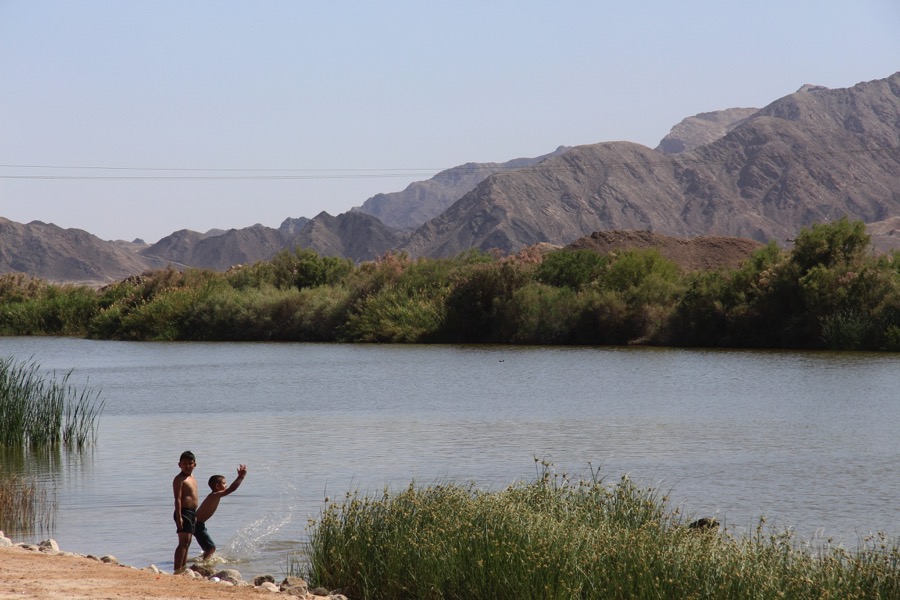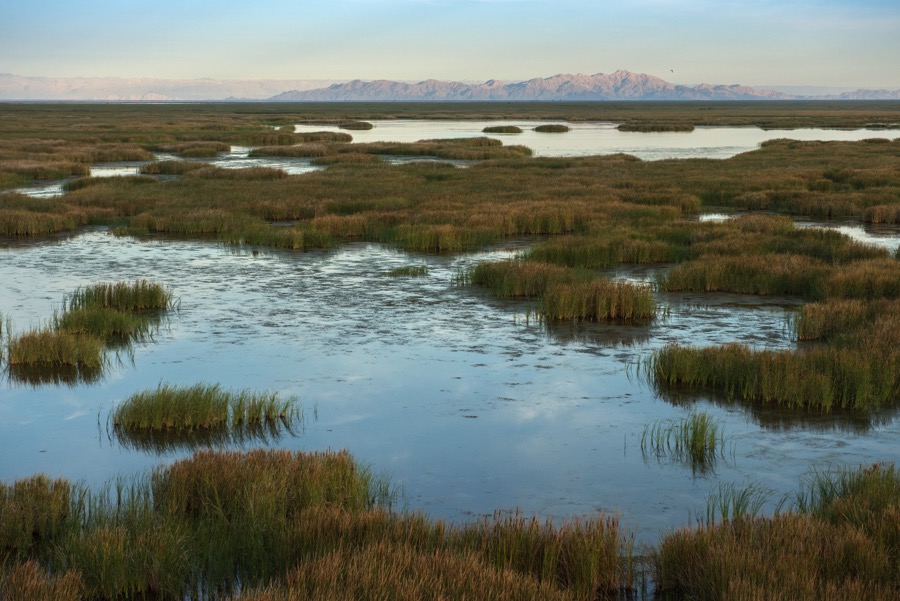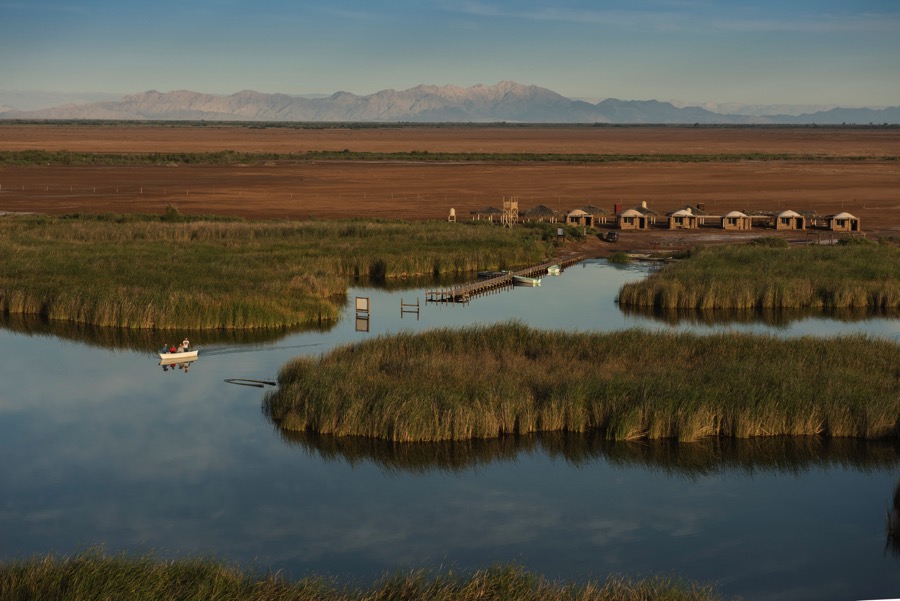Adaptive management through science-policy dialogues in transboundary watersheds.

region
Several decades of damming and diverting the Colorado River in the transboundary region of the United States and Mexico have caused the Colorado River delta to become a vast barren and dry land. However, small wetlands in the delta – such as the Cienega de Santa Clara – have emerged after unanticipated flows (i.e., from irrigation-district discharges and upstream floods) made their way to the Gulf of California.
Even with relatively small amounts of water flow, several patches of the delta slowly came back to life – albeit with habitats modified – and are now the home of many species of animals. To some extent, local people including the Cucapá – or “people of the river” – an indigenous community whose population has decreased from 5,000 to only 300 and who had fished, farmed, and hunted in this area for thousands of years, have also benefitted from these reinvigorated areas – an example of ecological and social resilience (see Resilience in an uncertain future: Part 1).
These examples of unanticipated wetland ecosystem restoration, such as that in the Cienega de Santa Clara, have offered anecdotal, yet practical, evidence to support a hope that many conservationists have long held: that the Colorado River delta could be restored back to life – and that such an outcome might only require small amounts of water (108,000 acre feet, equivalent to 0.7 percent of the original Colorado flow).[1] However, water scarcity in this arid region (annual precipitation of 3.5 inches [2]) – combined with population growth, agricultural expansion, and economic development – increases demand for water in both countries. Coupled with a changing climate that makes hydrological processes less predictable, it has been very difficult (but not impossible) to allow more water to flow through the delta to the sea.

(Photo credit: Sonoran Institute, 2014)
Framing the problem in terms of resilience and water security, then, the overarching question is: How can a resilient ecosystem receive a sufficient and secure water supply to be restored and sustained (and, in turn, supportive) given an uncertain climatic and hydrologic future? A promising way to find solutions to this problem is to use adaptive management based on science-policy dialogues.
Adaptive management (also referred to as adaptive decision making) “accounts for what is uncertain as well as what is known about the processes that influence natural resource behavior through time and the influence of management on resource changes. … [Adaptive management] seeks to reduce this uncertainty and thereby improve management through enhanced understanding of management effects.”[3]
Science-policy dialogues comprise a series of meetings where a network of people involved in decision-making (i.e., about water resources management) gather with scientists to explore ways to reduce vulnerability and increase adaptation to changing climatic and other conditions.[4] To succeed, science-policy dialogues need four conditions: inclusivity (the presence of wide-ranging viewpoints and interests), involvement (the persistence of individuals to participate), interaction (the usefulness of discussions and exchanges among participants), and influence (the ability to affect or inform policy and outcomes).

transboundary groundwater governance. Among the stakeholders were
city, state, and federal officials from both countries, NGOs, and physical
and social scientists (Photo: P. Vandervoet)
Adaptive management enhances resilience because it uses flexible planning, knowledge-sharing, and capacity building.
Flexible planning means that the outcomes of a plan are monitored, evaluated, and revised in a short-term iterative process that repeats over time. This allows working with uncertainty; as the future unfolds, decision-makers re-evaluate the plan and develop new objectives. For example, a community concerned for the health of a wetland (i) develops a plan to improve the state of the wetland, (ii) selects indicators to monitor the health of the wetland, (iii) reassess the conditions of the wetland (based on the monitoring indicators), (iv) identifies the strategies that were successful and those that were not, and (v) sets up new objectives and plans. This way, the next iteration starts.
Knowledge-sharing comes from the scientists sharing their findings and assessments, and from the community of stakeholders (users) who have the opportunity to formulate scientific inquiry customized to their needs. This is commonly referred to as use-inspired science. Thus, successful knowledge-sharing occurs in two directions, between scientists and stakeholders.

Capacity-building may occur, for example, through workshops and a series of science-policy dialogues where the professionals in charge of managing water resources can learn the state-of-the-art in scientific discoveries in terms of governance and technologies. They also would become familiar with the real needs of the local residents, users, and other stakeholders. This process would help enable them to do their jobs – i.e., manage water – better and more effectively.
Experience has shown that science-policy dialogues can offer more robust solutions than conventional approaches to assist with decision-making under conditions of uncertainty (see figure 1, below). In the conventional approach, for example, the role that scientists play tends to be separated from policy outcomes and the findings of scientific inquiry are confined to scientific publications, typically not sources of information for non-scientific decision-makers. By contrast, the policy-dialogue approach, which ideally includes social scientists, physical scientists, engineers, lawyers, and others in the dialogue, ensures that there is inclusivity among the multiple stakeholders, allows the necessary interactions to address uncertainty, and distributes usable information.

findings are limited to scientific publications and hardly ever considered in decision-making.
By contrast, the policy-dialogue approach is a recurring, iterative process (spiral) that inclusively
considers science, civil society and policy. After a series of dialogues, several solution sets are
developed, monitored and evaluated. The involvement and influence of all the stakeholders
develop over time (image from Scott et al. 2012).
Through a set of sequential interactions, a series of dialogues and solutions sets can develop over time. The policy-dialogue approach can be conceptualised as a growing spiral where the involvement and influence of stakeholders gradually grows as more meetings occur. By contrast, the conventional approach is a linear process, where solutions are not monitored or evaluated, so there is limited opportunity for learning.
An example of successful transboundary adaptive water management can be found in the U.S.-Mexico border region, where common water-management objectives have prevailed over dissimilar interests after many decades of science-policy dialogues. The multiple cultural, administrative, legal, and infrastructural disparities have dissipated during dialogues that have successfully produced agreements based on binational cooperation, more and better data, collaborative research, and finding mutually acceptable priorities.[5]
In the case of the Colorado River delta, scientists, government-agency representatives, nongovernmental organisations, and other stakeholders have engaged, formally and informally, in science-based dialogues to secure water resources for the delta’s wetlands and to restore their ecological and social value.[6] The yield from these dialogues has been to secure more viable supplies of water for the delta: in addition to the drainage water discharged from the irrigation district near Yuma, Ariz., the delta now receives water from other sources including reclaimed water from a treatment plant in Mexicali, Mexico; water from local farmers who sold some of their water rights to environmental uses; and water from the U.S. through a landmark cooperation agreement signed in 2012 that allows more water to flow to the sea for a five-year pilot period.[7]

(Photo credit: Sonoran Institute 2014)
This additional water is expected to increase the size of the wetland and bring back more life in this area, benefitting many species and local communities (such as by enhancing economic activities, in particular fisheries and ecotourism), thereby increasing resilience of both social and ecological systems.
In summary, in part 1 of our two-part essay on resilience in an uncertain future, we discuss how, resilience and water security have multiple dimensions – social, ecological, and hydrological. Relying solely on technological and engineering solutions is not likely to support resilience or to achieve water security.
In this essay (part 2), we suggest that adaptive management that integrates science-policy dialogues – through the perspective of interconnected social, ecological, and hydrological systems – appears to be our best bet to increase resilience, especially under future conditions of increasing uncertainty.
References
[1] Pronatura Noroeste and the Sonoran Institute. 2010. Colorado River Delta Water Trust: Restoring a Local Economic and Environmental Resource. Sonoran Institute, http://bit.ly/21516Je.
[2] Weather base http://www.weatherbase.com/weather/weather.php3?s=016067. Accessed March 28 2016.
[3] Williams, BK, and ED Brown. 2012. Adaptive Management: The U.S. Department of the Interior Applications Guide. Adaptive Management Working Group, U.S. Department of the Interior, Washington, DC, p. 118.
[4] Scott, CA, RG Varady, FJ Meza, E Montaña, GV de Raga, B Luckman & C Marius. 2012. Science-Policy Dialogues for Water Security: Addressing Vulnerability and Adaptation to Global Change in the Arid Americas. Environment: Science and Policy for Sustainable Development, 54(3): 30–42.
[5] See Scott, et al., Environment, 2012.
[6] For an overview of these processes, see the Sonoran Institute’s videos, “Hope for the Colorado River Delta,” September 6, 2011 (http://bit.ly/1LsuhNn), and “Moving Forward—Delta Restoration Momentum,” August 25, 2013 (http://bit.ly/1KosJt3).
[7] The International Boundary and Water Commission (IBWC) (or CILA in Spanish) signed Minute 319 on 20 November 2012. In this agreement, for the first time in history, water was allocated for the restoration of the Colorado Delta ecosystem, for an interim five-year period (2012-2017).
